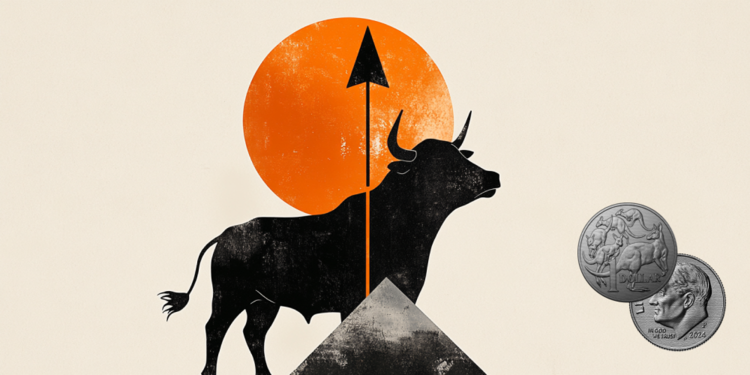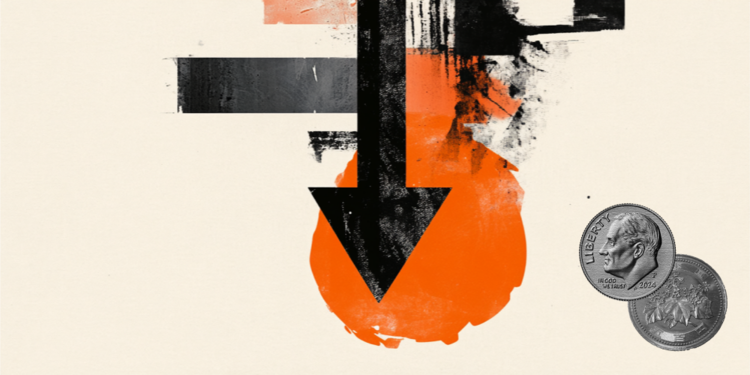- USD/CAD depreciates as commodity-linked CAD receives support from higher oil prices.
- The price of WTI oil is hovering around its highest level since October, driven by a possible increase in global fuel demand.
- The US Dollar Index maintains its position near 109.00, close to recent highs.
USD/CAD halts its four-day winning streak, trading around 1.4400 during the Asian session on Monday. This decline in the pair could be attributed to the improvement of the Canadian Dollar (CAD) amid higher oil prices, given that Canada is the largest exporter of crude oil to the United States (US).
West Texas Intermediate (WTI) oil is trading around $73.50 per barrel, approaching its highest level since October 2024. Investors are closely monitoring the potential impact of colder weather in the Northern Hemisphere and economic stimulus measures. of Beijing in global fuel demand.
In politics, Canadian Prime Minister Justin Trudeau is expected to announce his resignation before a national caucus meeting on Wednesday. Citing three sources, The Globe and Mail reported Sunday that Trudeau is likely to announce as soon as Monday that he will resign as leader of the Liberal Party.
However, the decline in the USD/CAD pair could be limited as the US Dollar (USD) gains ground amid the Federal Reserve’s (Fed) hawkish policy shift. The US Dollar Index (DXY), which measures the performance of the US Dollar (USD) against six major currencies, maintains its position near 109.00, close to recent highs.
After three consecutive rate cuts, the Fed is expected to stop its easing cycle at the January meeting. According to the latest dot plot in the Fed’s Summary of Economic Projections, policymakers anticipate the federal funds rate will reach 3.9% by the end of the year, indicating expectations of just two rate cuts. rates in 2025.
Fed officials have also signaled a more cautious approach to rate cuts in 2025. On Friday, Richmond Fed President Thomas Barkin stressed that the benchmark policy rate should remain restrictive until there is further confidence that inflation is on track to return to the 2% target.
Additionally, Fed Governor Adriana Kugler and San Francisco Fed President Mary Daly underscored the difficult balancing act facing U.S. central bankers as they try to slow the pace of monetary easing this year. anus.
Canadian Dollar FAQs
The key factors that determine the price of the Canadian Dollar (CAD) are the level of interest rates set by the Bank of Canada (BoC), the price of oil, Canada’s main export product, the health of its economy, inflation and the trade balance, which is the difference between the value of Canadian exports and its imports. Other factors are market confidence, that is, whether investors bet on riskier assets (risk-on) or look for safe assets (risk-off), with the risk-on being positive for the CAD. As its largest trading partner, the health of the US economy is also a key factor influencing the Canadian dollar.
The Bank of Canada (BoC) exerts significant influence over the Canadian Dollar by setting the level of interest rates that banks can lend to each other. This influences the level of interest rates for everyone. The BoC’s main objective is to keep inflation between 1% and 3% by adjusting interest rates up or down. Relatively high interest rates are usually positive for the CAD. The Bank of Canada can also use quantitative easing and tightening to influence credit conditions, with the former being negative for the CAD and the latter being positive for the CAD.
The price of oil is a key factor influencing the value of the Canadian Dollar. Oil is Canada’s largest export, so the price of oil tends to have an immediate impact on the value of the CAD. Generally, if the price of oil rises, the CAD also rises, as aggregate demand for the currency increases. The opposite occurs if the price of oil falls. Higher oil prices also tend to lead to a higher probability of a positive trade balance, which also supports the CAD.
Although inflation has traditionally always been considered a negative factor for a currency, as it reduces the value of money, the opposite has actually happened in modern times, with the relaxation of cross-border capital controls. Higher inflation often leads central banks to raise interest rates, attracting more capital inflows from global investors looking for a lucrative place to store their money. This increases the demand for the local currency, which in the case of Canada is the Canadian Dollar.
The published macroeconomic data measures the health of the economy and may have an impact on the Canadian dollar. Indicators such as GDP, manufacturing and services PMIs, employment and consumer confidence surveys can influence the direction of the CAD. A strong economy is good for the Canadian dollar. Not only does it attract more foreign investment, but it may encourage the Bank of Canada to raise interest rates, resulting in a stronger currency. However, if economic data is weak, the CAD is likely to fall.
Source: Fx Street
I am Joshua Winder, a senior-level journalist and editor at World Stock Market. I specialize in covering news related to the stock market and economic trends. With more than 8 years of experience in this field, I have become an expert in financial reporting.







